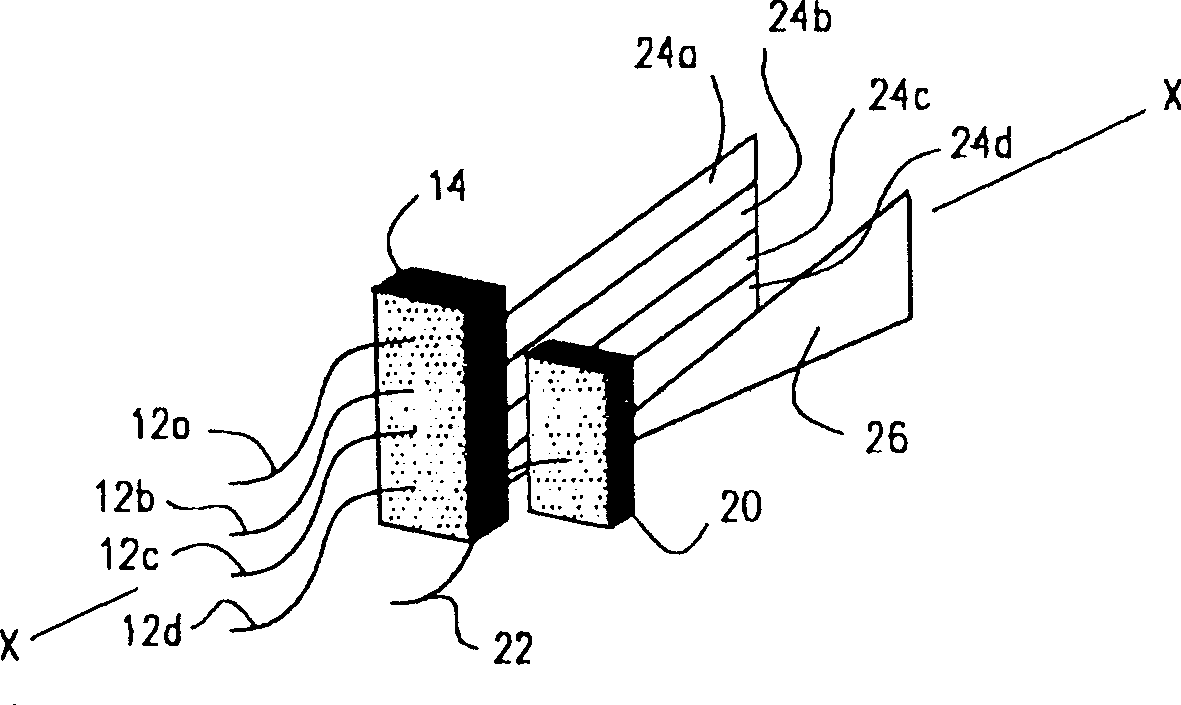Wavelength division multiplexing/demultiplexing devices using diffractive optic lenses
A diffractive optics and wavelength division multiplexing technology, applied in the direction of diffraction grating, optics, optical elements, etc.
- Summary
- Abstract
- Description
- Claims
- Application Information
AI Technical Summary
Problems solved by technology
Method used
Image
Examples
Embodiment Construction
[0042] Reference Figure 1a with 1b , They respectively represent a side view and a top view of the wavelength division multiplexing device in a preferred embodiment of the present invention. The multiplexing device 10 includes: a plurality of input fibers 12, an input fiber coupler 14, a diffractive optical collimator / focus lens 16, a reflective diffraction grating 18, an output fiber coupler 20, and a single output fiber 22. All the above-identified elements in the multiplexing device 10 are arranged along the optical axis X-X of the multiplexing device 10, which will be described in more detail below.
[0043] It should be noted at this time that the input fiber 12 and the output fiber 22, as well as any other fibers described in conjunction with the WDM device according to the present invention, are single-mode fibers. However, this should not limit the WDM device of the present invention to only use single-mode fiber. For example, the WDM device of the present invention may a...
PUM
 Login to View More
Login to View More Abstract
Description
Claims
Application Information
 Login to View More
Login to View More - R&D
- Intellectual Property
- Life Sciences
- Materials
- Tech Scout
- Unparalleled Data Quality
- Higher Quality Content
- 60% Fewer Hallucinations
Browse by: Latest US Patents, China's latest patents, Technical Efficacy Thesaurus, Application Domain, Technology Topic, Popular Technical Reports.
© 2025 PatSnap. All rights reserved.Legal|Privacy policy|Modern Slavery Act Transparency Statement|Sitemap|About US| Contact US: help@patsnap.com



